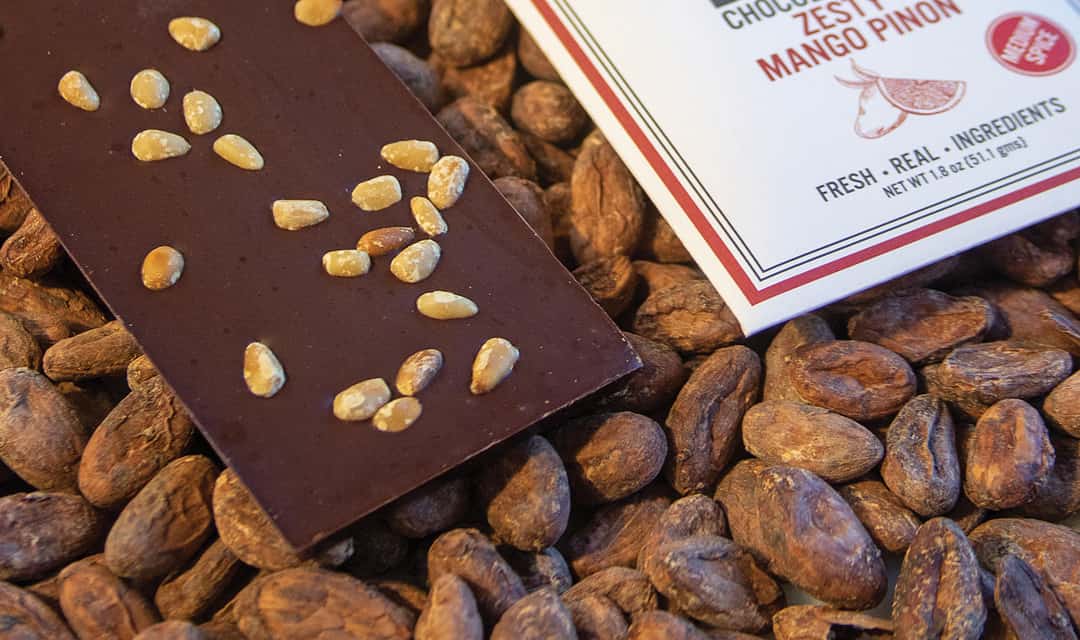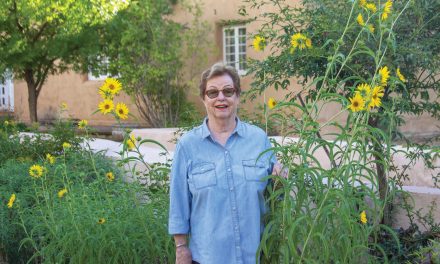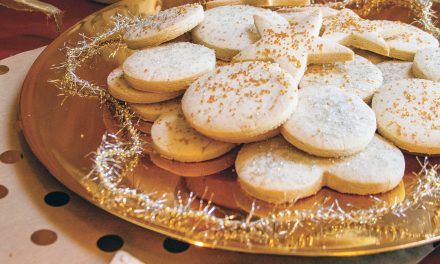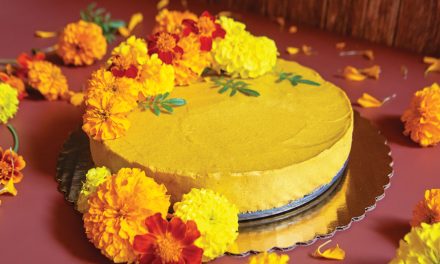Learning to Care for Cacao with Eldora
By Briana Olson ∙ Photos by Stephanie Cameron

Cacao beans at Eldora Chocolate.
“She’s a melter,” chocolatier Autumn Martin said coolly, leaning back from her desk at Theo Chocolate in Seattle. I’d just mentioned a Chicago chocolatier whose bacon chocolate bar had impressed me, and Martin was schooling me in the distinction between bean-to-bar production and one where the culinary artist melts down, flavors, and fashions chocolate produced by someone else. Spoiler alert: I didn’t get the job as lead confectioner at Theo, for which I had approximately zero qualifications, and Martin eventually moved on from the company whose early reputation she helped create (and which recently announced plans to merge with the conglomerate that produces Red Vines). But the interview and tour of their original chocolate factory were an important part of my chocolate education.
The roaster at Albuquerque’s Eldora Chocolate, used for four-pound batches of cacao beans, is tiny in contrast to the one I saw at Theo; instead of a conch machine roughly the size of a large cement mixer, five twenty-pound conchers sit upright on a counter in a room north of the café area. Opened in 2018 on a quiet corner in Albuquerque’s far North Valley, Eldora represents a newer era of small-batch, bean-to-bar chocolate. Education, as much as chocolate, dominates my conversation with Steve Prickett, the company’s founder and master chocolate maker. He must utter the word a hundred times over the course of my visit with him, and I understand; here in the United States, almost all of us begin our chocolate educations in a state of sugarcoated ignorance.


Left: Cacao beans roasting. Right: Owner Steve Prickett with freshly made chocolate bars.
This is not my first trip to Eldora, so the calm, easy vibes of the space are familiar. There are no pushy, overbearing salespeople, nor is there a sense of being supervised; instead, there is a quiet greeting and freedom to roam, peeking at raspberry rose and blueberry apple truffles among other confections in the display case, glancing through the window to the room where the granite rollers in the conch machines grind nibs into the silky chocolate liquor (no relation to booze) that will be tempered and poured into molded trays, meandering toward the shelves of single-origin chocolate bars. There is no limit to the number of samples one may have here; for Prickett, a quintessential component of a chocolate education is “developing your chocolate personality.” For that lesson, tasting is the only method—“on the back of your tongue,” he entreats me when I sample the Uganda semuliki forest from one of the conchers.
Cacao, as Prickett points out while we stand in front of the large world map with which tours of Eldora start, grows only within twenty degrees of the equator. Thus, the notion of Belgian or Swiss chocolate is essentially a myth, or at best a partial truth, attributing origin status not to the birthplaces or sources of cacao but to the places where fine chocolates were historically processed. Prickett is also quick to contrast chocolate legacies. While Europe’s was defined by chocolate for royalty, starting with the first beans brought from Mexico to Spain, he sees the US legacy as one defined by Hershey. His father was one of thousands of GIs who received milk chocolate handouts during World War II—a move that Prickett believes helped cement the milk chocolatification of the States, where even now acquiring a taste for the brighter, bitter notes of dark chocolate is somewhat rare. Prickett estimates that just 2 percent of the US chocolate market is held by fine chocolates—that is, chocolate that is carefully sourced and minimally processed.


Left: A variety of truffles at Eldora. Right: Bean-to-bar chocolate.
Much of what we call chocolate isn’t. In desserts or savory dishes, I still sometimes mistake vanilla notes for chocolate, having so early become accustomed to the pairing of these two flavors, the muting of chocolate not only with milk fat, oils, and sugars but (usually) artificial vanilla, a.k.a. “natural flavoring.” Even the ingredient list of gourmet chocolates can be surprising. “There are so many artificial colors and flavors to make truffles pretty,” Prickett says, such as the agents used to seal the bottom of a truffle and give it a perfect look. Eldora doesn’t use artificial additives or preservatives in any of their chocolates.
In a sense, Eldora is more like a winery than a candy factory; the goal is to make chocolate bars that express the flavor notes of the beans. Hence the emphasis on single-origin chocolates, like the Ugandan semuliki, which tastes, in finished form, like a smooth, refined version of the raw bean I sample from one of the bins in what I think of as Eldora’s chocolate closet. It’s fruity and bright, with a burst of citrus—I offer plum when Prickett prompts me for flavor notes, and he says some people taste blueberry. The Venezuelan piaroa that I try later, at home—also at 70 percent—is remarkably distinct, rich, earthy, and almost smoky. I’m also a fan of Eldora’s 100 percent bars; the one I bought earlier this year was astringent and slightly floral, with a rainbow of flavor notes available to one patient enough to let a single square of chocolate dissolve slowly on their tongue.
Prickett’s mantra is that the chocolate should speak for itself. He wants you to select your own perfect choice, the truffle or bar that you will adore in the comfort and privacy of home, absent the eyes and opinions of the person who sold it to you. Despite the strength of his own tastes and convictions, he steers clear of suggesting that other preferences, whether for milk chocolate or everything lavender, are in any way inferior. (To wit, Eldora makes a bar with Los Poblanos lavender that I myself have purchased for a fellow lover of the popular aromatic.) “The bottom line,” he says, “is treating people like human beings.” That includes his staff, whose quiet movements and focus, despite the disruption of having a writer traipsing through the middle of things, mirror the brightness of the space.
![]()
“This was designed on the back of a napkin,” he says of the two-thousand-square-foot building that he and his wife built in a part of town I wish more outsiders would visit. The main kitchen has twenty-two-foot ceilings and so many skylights and windows that, Prickett says, it’s not always necessary to turn on the lights. He and his wife, who designed the interior—sealed concrete floors and stainless steel wainscoting contribute to the bright, open feel—understood from the beginning that the space would influence the team. Of his four staff members, one has been there since Eldora’s inception, and all have the authority to cancel a batch of chocolate. “Everyone who works here has to know how to temper four ways,” Prickett says as he describes how they used double boilers until they bought their first tempering machine. (Industrial chocolate producers use lecithin to make tempering and pouring easier, hence the waxy texture of so much chocolate candy.) Inviting me to sample a trial of an Earl Grey truffle the team is working on, he describes how they decide together when they’ve landed on the final version. My vote doesn’t count, but I’m happy to actually taste the bergamot, because why subdue the essence if you’re calling it Earl Grey?
There is a spirit at play at Eldora Chocolate, and it’s contrary to convenience or efficiency. As I tour the space, I can’t help thinking there’s something we often miss when advocating for small-scale producers. It’s creativity, joy, the pleasure of striving to make a perfect thing. I drive away with just that: a rich cup of drinking chocolate made from the same Zorzal beans, sourced from the Dominican Republic, used in Eldora’s pecan cardamom and gremolata bars. It leaves me blissed, fired up, convinced, as I was the very first time I drank real chocolate, that cacao is epiphanic.

Chocolate care:
Prickett recommends storing fine chocolates between 58 and 65 degrees Fahrenheit. A wine refrigerator is ideal; if you don’t have one, store chocolates (both truffles and bars) in their packaging in a glass or plastic container with a sealed lid in the produce drawer in the refrigerator.
Ten or fifteen minutes before eating or serving, take out the chocolate and let it warm up.
Pro tip: If you order chocolate online during the summer, place the box in the refrigerator for an hour before opening it.
8114 Edith NE, Albuquerque, 505-433-4076, eldorachocolate.com

Briana Olson
Briana Olson is a writer and the editor of edible New Mexico and The Bite. She lives in Albuquerque.

















